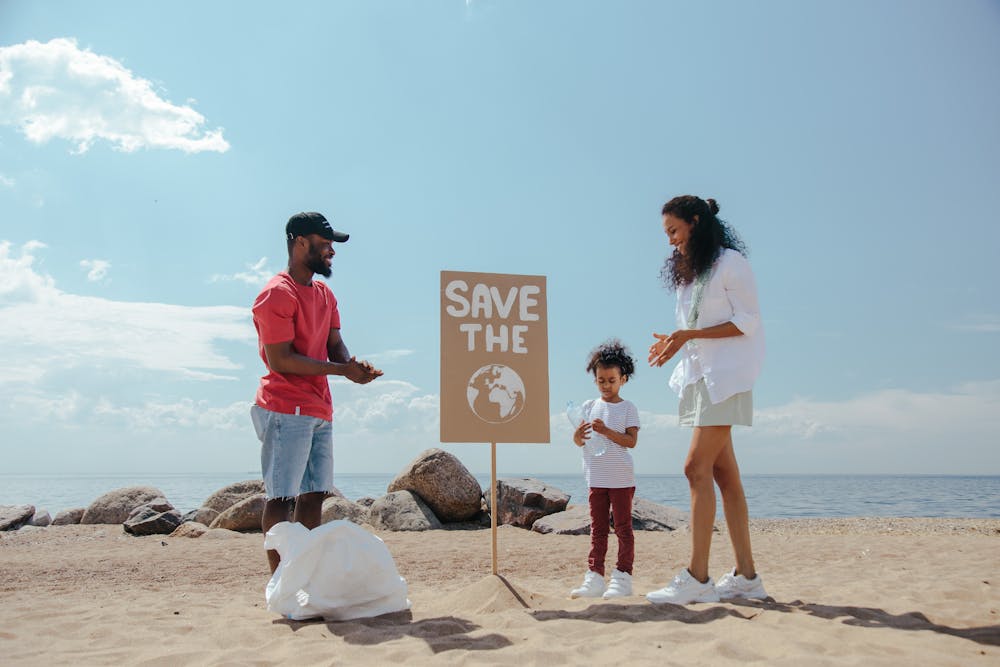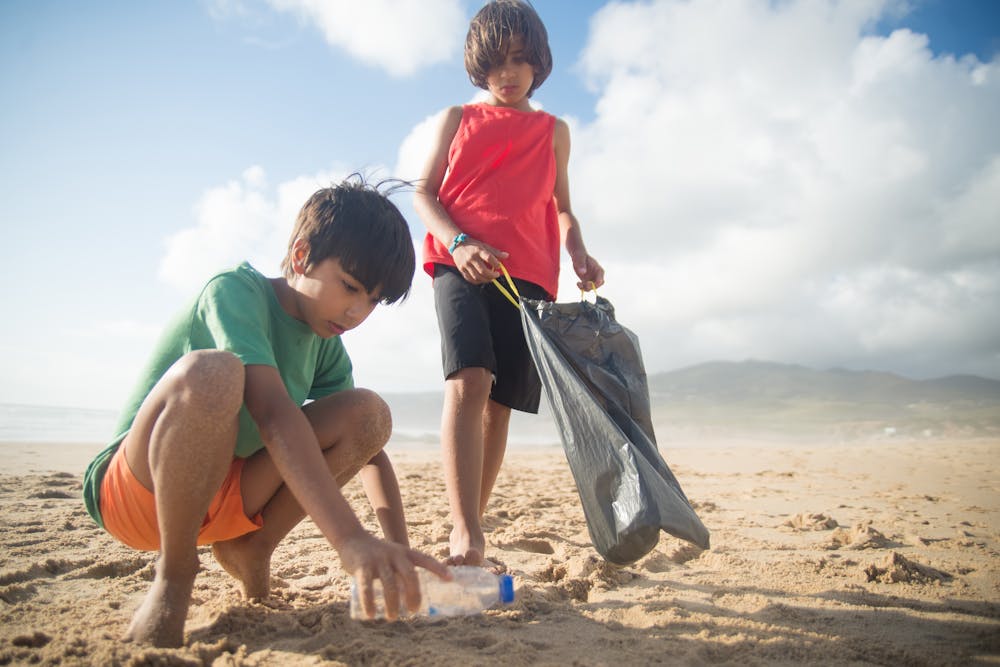Plastic waste is one of the most significant environmental issues of our time. It clogs our oceans, chokes wildlife, and seeps into nearly every ecosystem. Tackling plastic waste might seem daunting, but we can all make a difference by starting with small, manageable changes in our daily routines. From swapping plastic shopping bags for more sustainable alternatives to finding creative ways to recycle plastic items, here are five simple tips to help you reduce plastic use and move towards a cleaner, greener world.
Choose Recycled Paper or Cloth Bags for Your Shopping
Plastic bags are everywhere, yet they are some of the most unnecessary single-use items in our lives. Switching to recycled paper bags or cloth-based shopping bags might seem like a minor step, but it can make a massive difference. Not only do reusable bags cut down on plastic waste, but they are also sturdier and better for the environment. A well-made cloth bag, for instance, can last for years, which means you’re avoiding the need to use plastic alternatives repeatedly.
When choosing reusable bags, look for durable materials like cotton, jute, or hemp, which are both environmentally friendly and biodegradable. Many stores now sell bags made from recycled materials, too. Another idea is to keep a few foldable cloth bags in your car or handbag for unplanned shopping trips. Even if you only swap to cloth or paper bags for your grocery shopping, you’re already cutting down on a significant source of plastic waste.
Avoid Products with Plastic Packaging
Packaging is a huge source of plastic waste, but there are plenty of ways to shop more sustainably. One easy approach is to choose products that come in glass, cardboard, or paper packaging instead of plastic. This could mean selecting pantry staples like pasta or rice in cardboard boxes or picking fresh produce that doesn’t come wrapped in plastic. Many supermarkets and local markets now offer bulk-buy options, allowing you to bring your containers and purchase only what you need without unnecessary plastic packaging.
Opt for soap bars instead of liquid soap in plastic bottles for toiletries. Solid shampoo and conditioner bars are also widely available and reduce the need for plastic bottles. Many beauty brands now offer refillable makeup products or glass packaging, so watch for these alternatives. The transition might take some time, but over time, you’ll notice how much plastic packaging can be avoided with a few changes in your shopping habits.
Use Reusable Containers for Food and Beverages
From water bottles to takeaway coffee cups, plastic containers are everywhere and often used only once. By switching to reusable containers, you’re cutting down on plastic waste and saving money in the long run. Instead of buying single-use water bottles, invest in a high-quality stainless steel or glass bottle. Many brands even offer insulated bottles that keep drinks hot or cold for hours, making them perfect for coffee lovers on the go.
For takeaway food, consider bringing your containers. Many cafes and restaurants are happy to pack food into containers you get, and some even offer discounts if you bring a reusable cup for coffee. Choose glass or metal containers with secure lids for meal prepping at home. They’re often more durable than plastic, don’t absorb food smells, and won’t leach harmful chemicals into your food when reheated. Investing in reusable containers might take a little effort initially, but once you’ve made the switch, you’ll wonder how you managed without them.
Quit Buying Plastic-Based Products
Going plastic-free means looking at everything we buy, not just packaging or bags. Plastic can be found in everyday items, from clothes to kitchenware and toys. Synthetic fabrics like polyester, for example, release tiny microplastic fibres when washed, which eventually make their way into our oceans. By opting for natural fabrics like cotton, wool, or bamboo, you’re helping reduce the amount of microplastic in waterways.
In the kitchen, opt for utensils made from wood or stainless steel instead of plastic. Look for bamboo toothbrushes, and consider using a safety razor with metal blades instead of disposable plastic razors. Even items like cleaning tools can be replaced with natural alternatives—many brands now offer biodegradable sponges and brushes made from coconut fibres or natural wood. Making these small switches may require some planning, but the environmental benefits are undeniable.
Consider wood or fabric toys instead of plastic ones for children’s toys. Many traditional wooden toys last longer and can be passed down to younger siblings or friends. By being mindful of the types of materials we buy, we can all reduce our reliance on plastic.
Get Creative with Plastic Recycling
Let’s face it – some plastic is unavoidable, but that doesn’t mean it has to go straight to the bin. Instead of discarding plastic items, consider how they can be repurposed or upcycled. Many people are finding inventive ways to turn plastic containers, bottles, and bags into something useful, giving them a second life rather than letting them pile up in landfills.
For instance, plastic bottles can be turned into plant pots or used to create vertical gardens. Old plastic containers can be repurposed as organisers for stationery or small household items. Some creative souls even turn plastic into art, using bottles, caps, and other bits to create sculptures or wall hangings. You can also get children involved by using empty plastic bottles and cartons for craft projects. By thinking outside the box, you’ll find that much plastic can be reused in surprisingly practical or decorative ways.
For the plastic items you can’t repurpose, recycle them properly. Not all plastics are recyclable, so it’s helpful to learn which types your local recycling centre accepts. Check the recycling symbols on plastic items and ensure they’re clean and dry before placing them in recycling bins. Recycling plastic doesn’t solve all the problems associated with plastic use, but it does keep some of it out of landfills and the natural environment.
Final Thoughts: Making a Difference, One Small Change at a Time
Reducing plastic use might seem challenging, but anyone can make a big difference with a few small steps. By choosing reusable bags, opting for products with minimal packaging, and replacing single-use containers with lasting alternatives, you’re already well on the way to a plastic-free lifestyle. Add a dash of creativity by recycling plastic items around your home, and you’ll see how many ways you can reduce plastic waste in your everyday life.
Remember, every little change counts. It doesn’t take much to reduce your plastic footprint; once you’ve made these changes, they become a habit. Start with one tip today – perhaps by switching to a reusable shopping bag – and build from there. The planet will thank you for it, and you’ll feel good knowing you’re doing your part for a cleaner, greener future.

